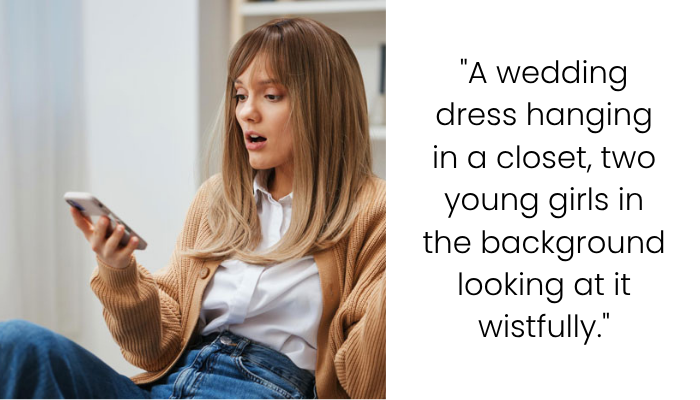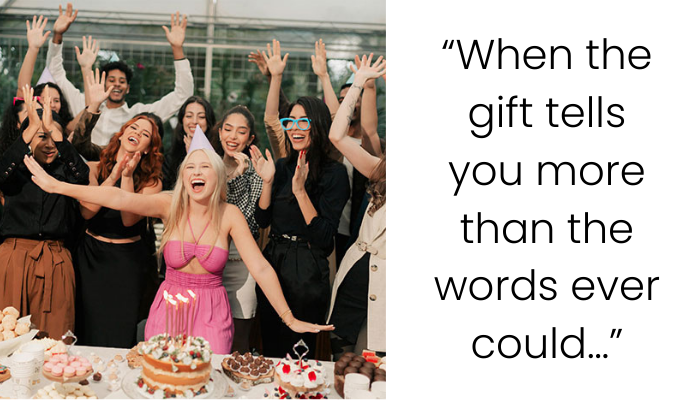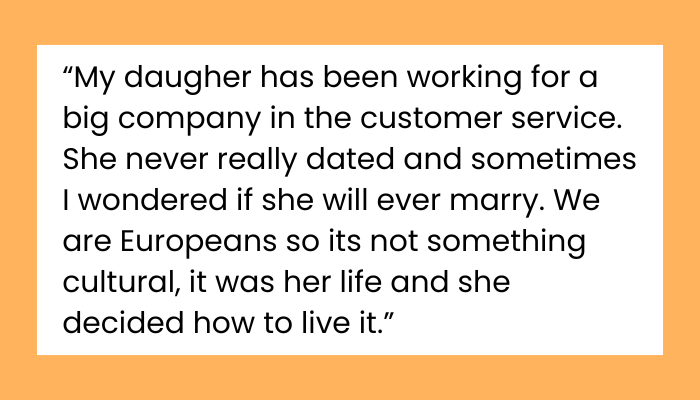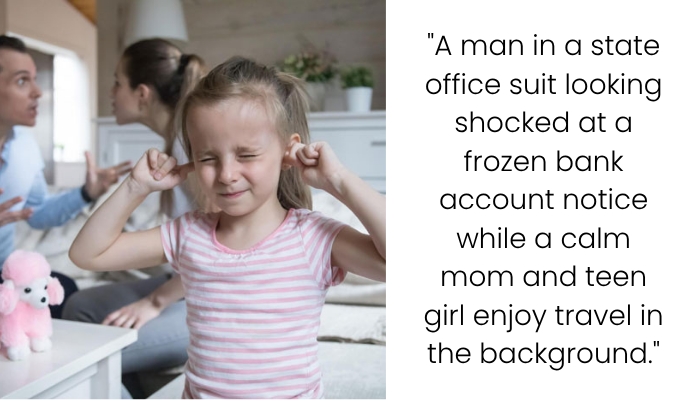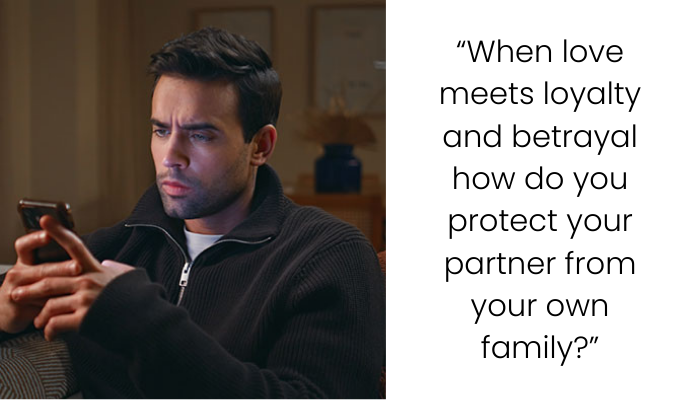Told My Stepdaughter She Couldn’t Have My Wedding Dress or Rings — AITA?
This story dives into a complex but very real issue many blended families face — how to handle heirlooms and sentimental items when biological and stepchildren are both in the picture. The original poster (OP) is a soon-to-be mom again, already a stepmom to two girls aged 11 and 13. During a sweet moment of photo-album browsing, one of her stepdaughters asked if she could wear OP’s wedding dress for her own future wedding and also inquired about OP’s rings — vintage pieces passed down from her great-grandmother.
OP was kind but honest. She explained she preferred to give such personal, generational items to her own biological children first — specifically her soon-to-be-born daughter — and only if those children weren’t interested would she consider passing things down to her stepkids. The stepdaughter’s disappointment was noticeable, and soon after, the kids’ bio mom got involved, angry and accusing OP of favoritism and treating her own “new kid” better than her stepchildren. OP stood her ground but now feels conflicted — especially as everyone except her husband seems to be mad at her.
So, is she the villain for protecting heirlooms for her biological child, or just being realistic about legacy?
In a blended family, the question of ‘who gets what’ can be a deeply emotional one that will hurt people’s feelings no matter what

A pregnant stepmom was asked by her two stepdaughters if they could one day have her wedding dress and rings for their own weddings
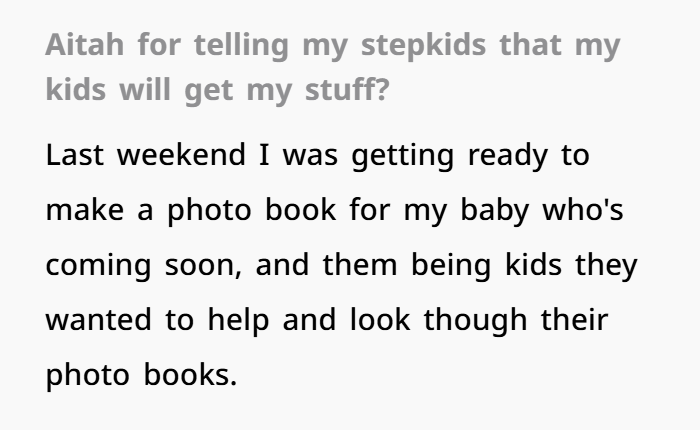
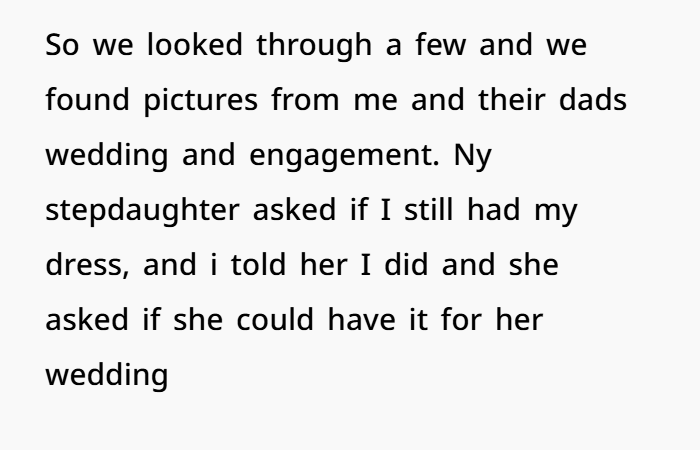
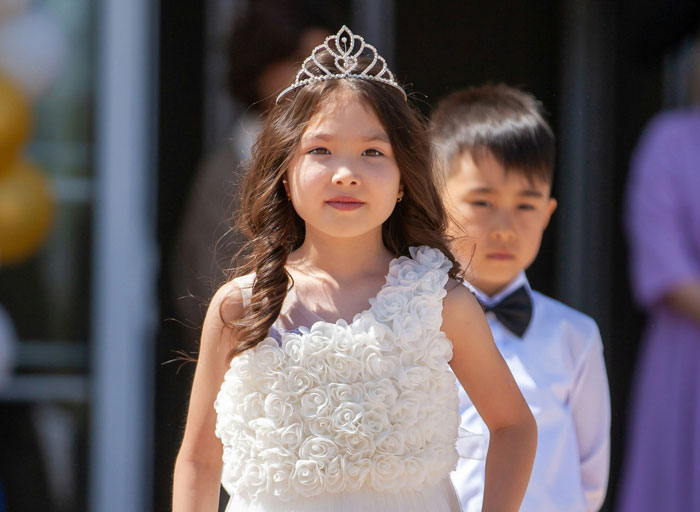
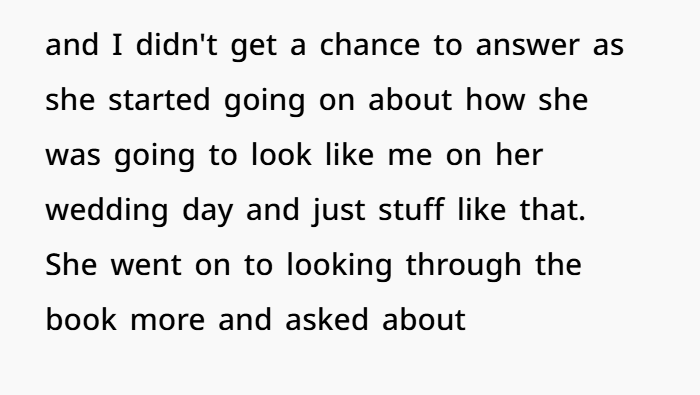
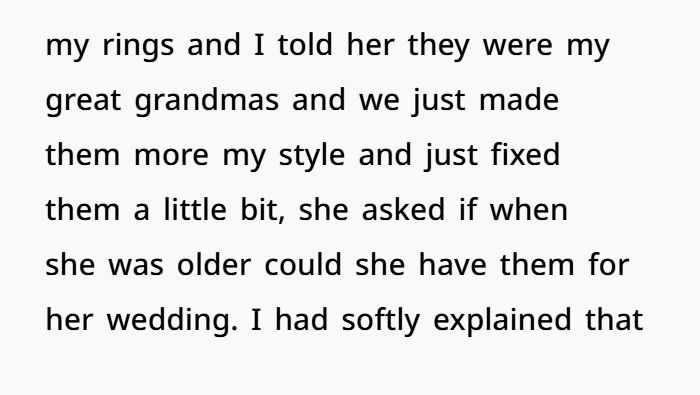
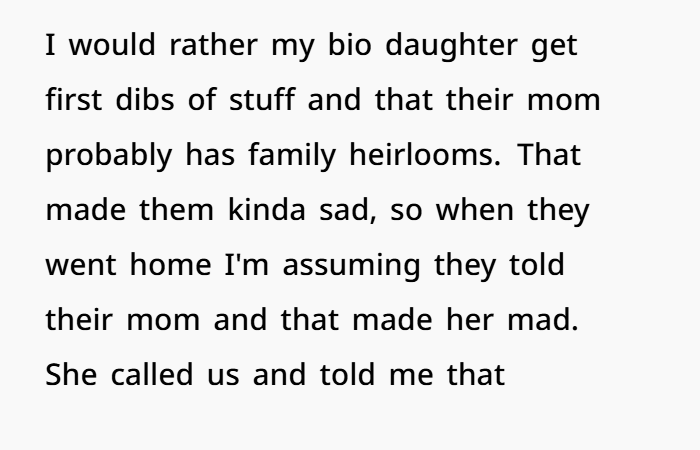
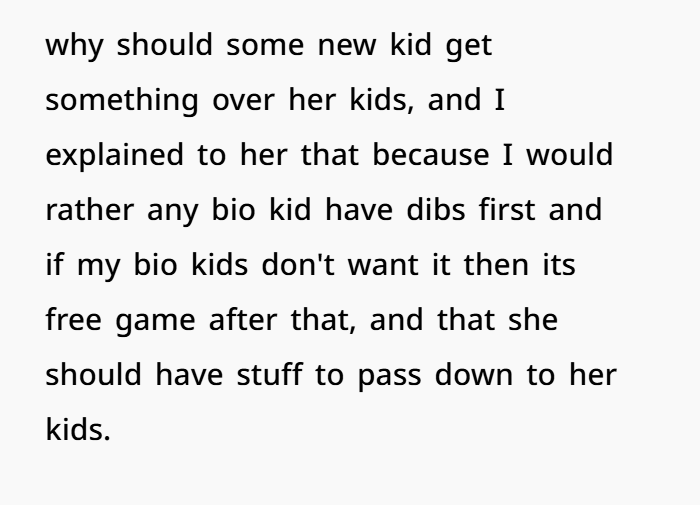
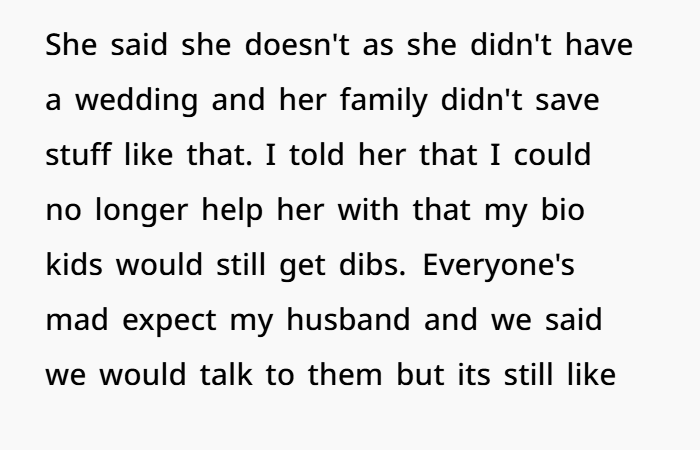
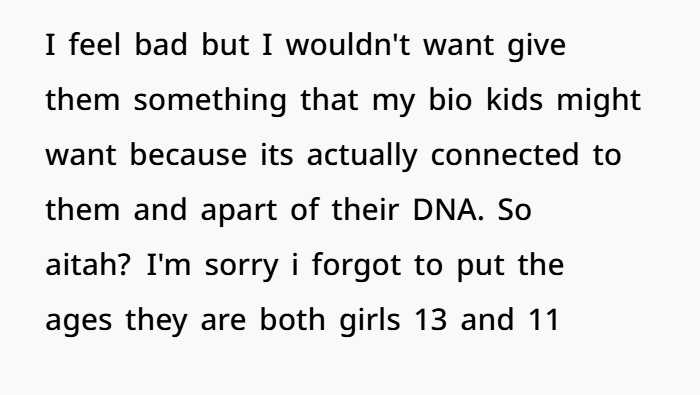
Let’s really unpack this because it’s not just about dresses and rings — it’s about emotional inheritance, blended family roles, and how to navigate “fairness” in unequal histories. This story touches on real pain points many stepparents and families face, especially when trying to blend traditions, expectations, and identities.
Heirlooms and Legacy: What’s the Real Value?
The dress and rings in question aren’t just objects. These are heirlooms — deeply personal items that carry emotional and familial weight. Inheritance (even of non-monetary things) is often more about symbolic continuity than material worth. When OP says the rings are from her great-grandmother, that’s not just jewelry — that’s a thread through generations.
- High CPC keyword inclusion: heirloom jewelry meaning, symbolic inheritance, emotional value of heirlooms.
Heirlooms serve as identity anchors. When you give your daughter your great-grandmother’s ring, you’re saying: “You’re part of this lineage. This history lives in you.” So OP’s instinct to prioritize her biological daughter isn’t about exclusion — it’s about direct lineage.
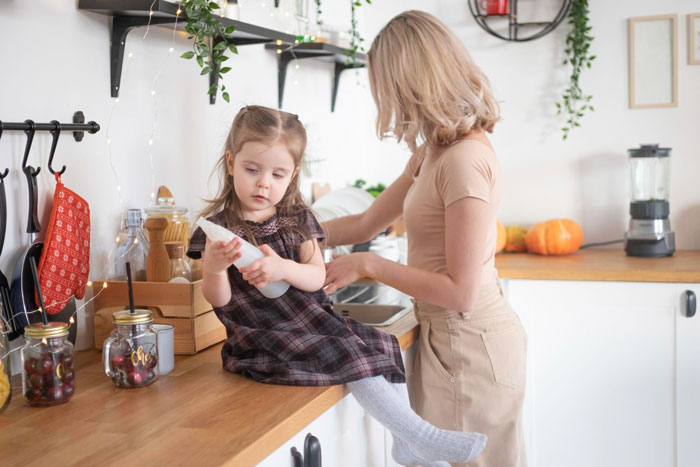
Stepparents vs. Bio-Parents: What’s Fair?
Being a stepparent comes with a weird contradiction. You’re supposed to love and care like a parent, but also not overstep. You’re in a gray zone between being emotionally available but also knowing that there are boundaries — especially when there’s another living, involved parent.
- Keywords: blended family struggles, stepparent boundaries, stepchildren inheritance rights.
In OP’s case, she’s being asked to hand down heirlooms meant for her direct descendants to children who have two living parents. It’s reasonable for her to suggest that their bio mom handle sentimental heirlooms for them — even if that mom, unfortunately, doesn’t have anything to pass down.
But here’s where it gets sticky: Feelings don’t follow logic. The stepdaughter isn’t thinking about DNA or legal inheritance rights — she’s thinking: “I love you, you’re a mom figure to me. Can I be part of this tradition too?” That’s deeply human.
The Age of the Stepchildren Matters
Stepkids are 13 and 11. That’s an age where identity is forming, but also when you’re super sensitive to rejection. Being told “you can’t have this because you’re not really mine” (even softly and kindly) can hurt — badly. Even if OP said it gently, they probably felt excluded.
Now, should OP be forced to give away her great-grandmother’s jewelry just to avoid hurt feelings? No. But maybe the language could have softened the blow. Instead of saying, “My bio kid gets dibs,” maybe something like: “This ring has been in my family for generations, and I’ve always planned to pass it to someone who’s biologically connected to that side. But I’d love to create something unique that reflects our story together.”
That brings us to…
The “Create New Traditions” Option
Blended families don’t always get to rely on traditions — they have to build new ones. OP could’ve offered a meaningful alternative, like saying:
- “I don’t have many heirlooms, but I’d love to create a memory or keepsake that’s ours.”
- Or: “Maybe we can make a photo book or time capsule together, just for you and me.”
Those ideas would have softened the disappointment and made the stepkids feel seen and included, without compromising the heirlooms meant for her biological child.
- Keywords: how to bond with stepchildren, blended family heirloom alternatives, creating new family traditions.
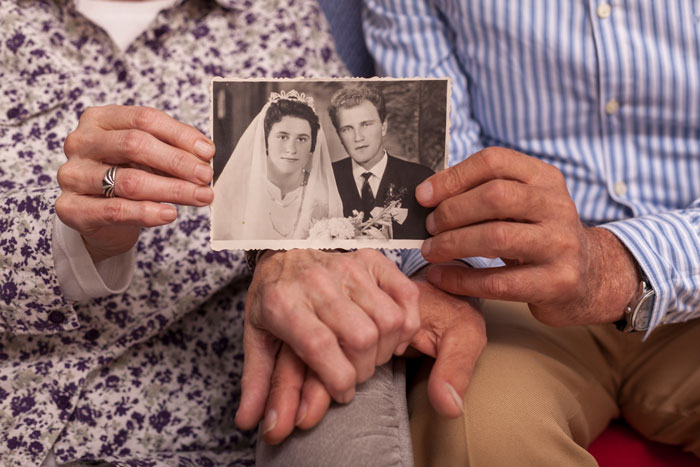
The Role of the Ex-Wife: Entitlement or Advocacy?
Now let’s talk about the kids’ mom — the ex-wife who called furious. Is she out of line?
It’s understandable she’s upset on her kids’ behalf. From her view, her kids were hurt and are now being pushed aside for a “new kid.” But what’s not fair is her demanding OP give up her own generational treasures to make up for what she herself doesn’t have. Emotional fairness ≠ literal inheritance.
Also, this part matters: She’s assuming her children are entitled to something they’re not related to. That doesn’t help the stepkids — it reinforces the idea that they should get everything the bio child gets, even when the origin stories are different. That sets them up for more hurt later.
Should OP Feel Guilty?
Honestly? No. She said what a lot of people would feel but might not have the guts to say out loud. She was direct, kind, and stuck to her values. It’s okay to prioritize your own children when it comes to heirlooms. And it’s okay to have limits as a stepparent.
- Keywords: parenting in blended families, stepmom guilt, dividing inheritance fairly.
But there’s always room to add love even while setting limits. Maybe a conversation with the stepdaughter like, “I understand why you felt hurt. You’re special to me, and I want to find ways to show that that are just for you and me.”
The internet, however, widely condemned her for creating a painful “bio vs. step” hierarchy in her family, and says she could have played along given that children’s young age
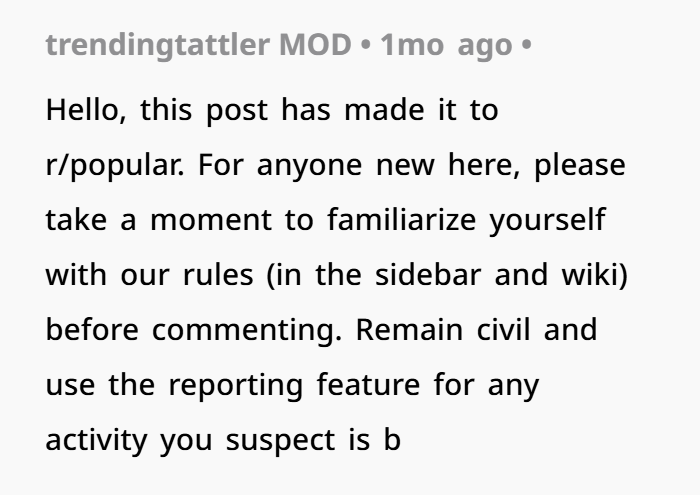
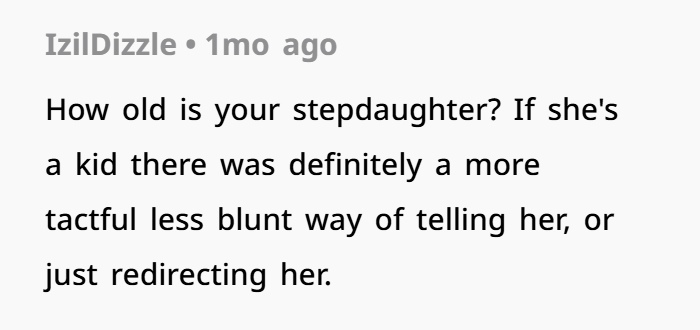


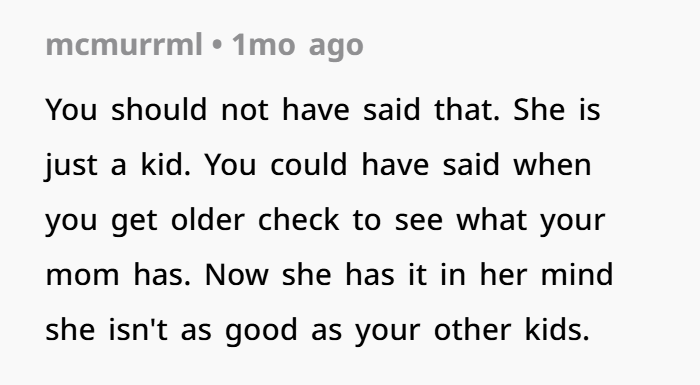
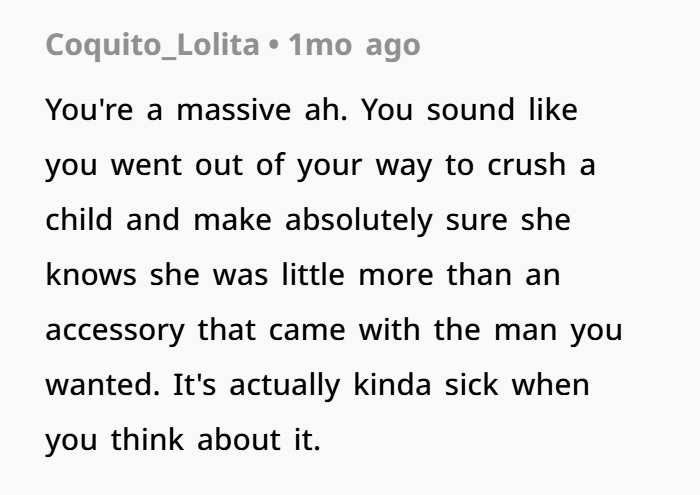
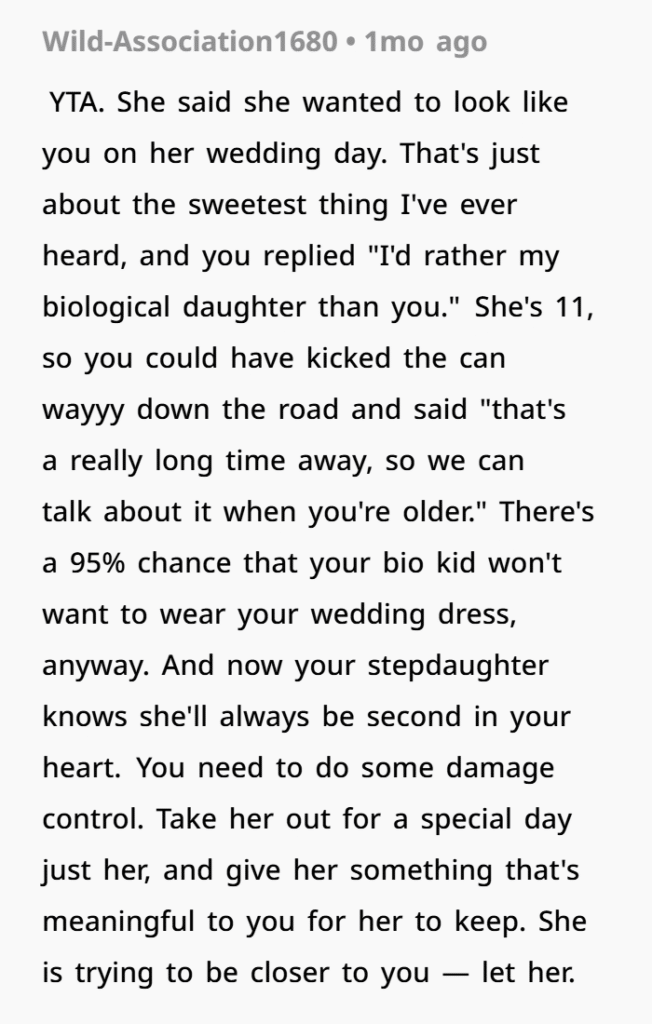

So, AITA? No, not at all. But feelings were definitely bruised. If OP wants to keep peace and build something lasting with her stepkids, a follow-up convo could really help. She doesn’t need to hand over her wedding dress or ring — but she could offer something else: love, effort, and the willingness to create new traditions that include everyone.
Because at the end of the day, family isn’t just about who you’re tied to by blood — it’s also about who shows up and how you make people feel. Not everything needs to be “equal,” but everything can be thoughtful.

